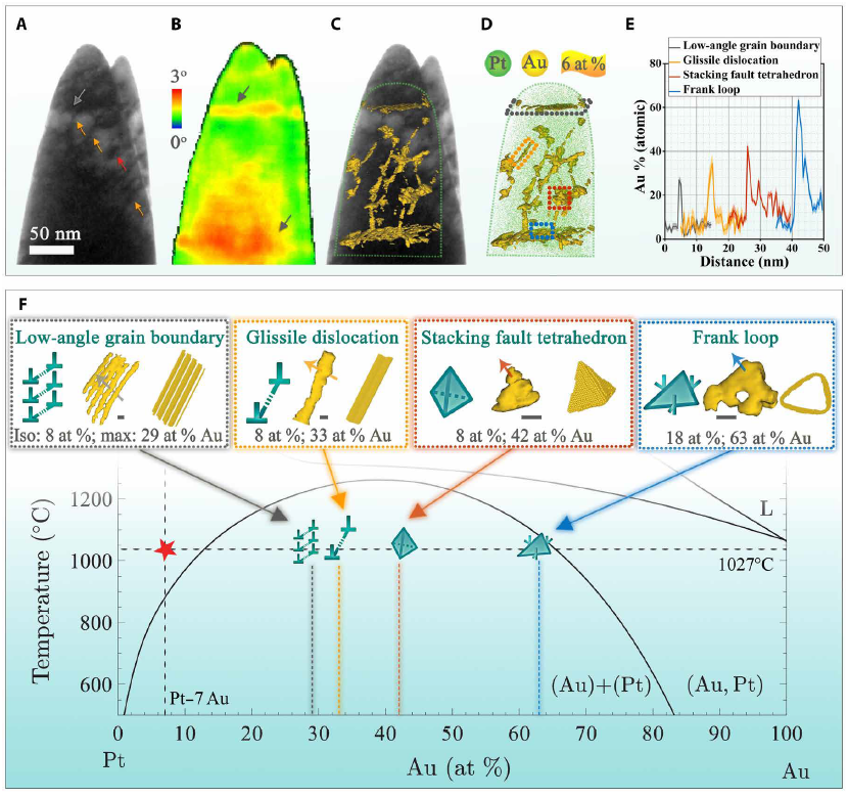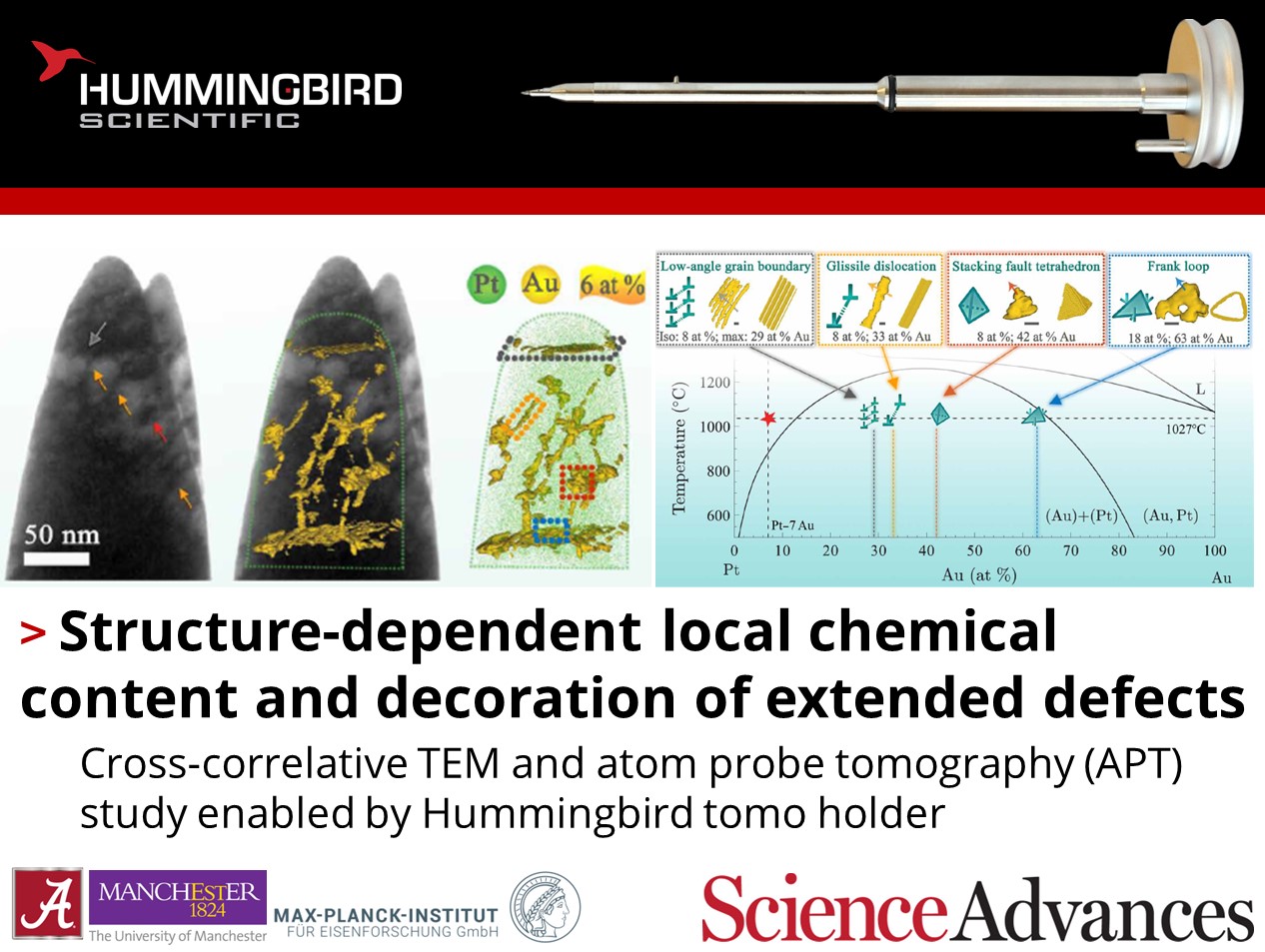How do different dislocation structures influence local chemistry?
Xuyong Zhou, Dierk Raabe, and their colleagues at the Max-Planck-Institut für Eisenforschung, the University of Alabama, and the University of Manchester published work using the Hummingbird Scientific tomography sample holder to study defect-specific solute decoration patterns in a Pt-Au model alloy. The cross-correlative study featured transmission electron microscopy (TEM) of wedge samples which were then analyzed using atom probe tomography (APT).

(a) TEM-based bright-field image of specimen tip. (b) PED-based LOS map. (c) APT-based reconstruction of the 6 at % segregated Au isosurface superimposed on (a). (d) Spatial distribution of Pt (green) and Au (gold) atoms in the specimen tip superimposed on (c). (e) Au at % profiles across defects shown in (f). (f) Each observed defect type, corresponding defect symbols, DMD simulation result, and location on Pt-Au phase diagram.
The Cameca Local Electrode Atom Probe (LEAP) 5000 XS provides 3D spatial reconstruction and chemical mapping of prepared wedges. Cross-compatibility is enabled by the unique tips available for the Hummingbird Scientific tomography sample holder. APT is a powerful technique, yet destructive to samples, so TEM pre-characterization was vital to linking the morphology of extended defects to their local chemistry and solute decoration. From low angle grain boundary to glissile dislocations, to SFTs and finally faulted loops, extended defects show increasing local Au content, ranging over half an order of magnitude. More variety and complexity than previously expected was observed in solute decoration patterns. The mechanisms governing these connections are investigated using diffusive molecular dynamics (DMD) and demonstrate the use of the tomography holder for combined studies with APT. These hidden defect-solute interactions better explain mechanical performance tradeoffs in structural metals and surface electrocatalysis.
Reference: X. Zhou, J. R. Mianroodi, A. Kwiatkowski Da Silva, T. Koenig, G. B. Thompson, P. Shanthraj, D. Ponge, B. Gault, B. Svendsen, and D. Raabe, Science Advances 7 eabf0563 (2021) DOI: 10.1126/sciadv.abf0563
Full paper Copyright © 2022 American Association for the Advancement of Science
View All News

